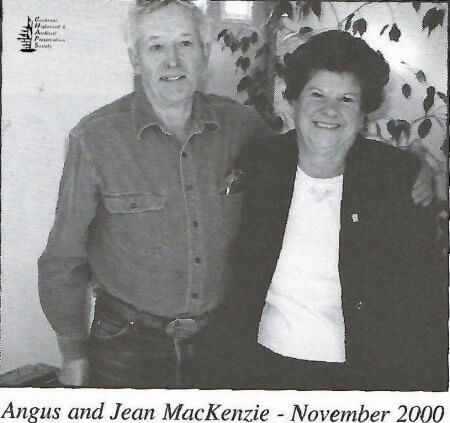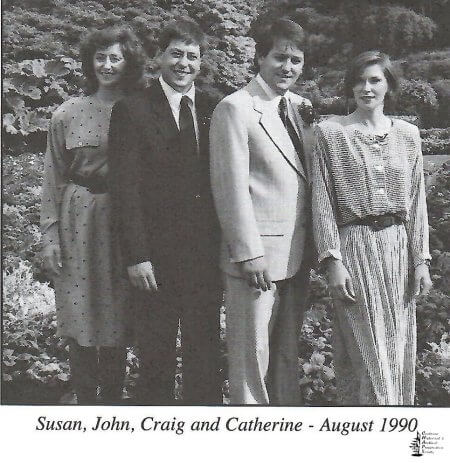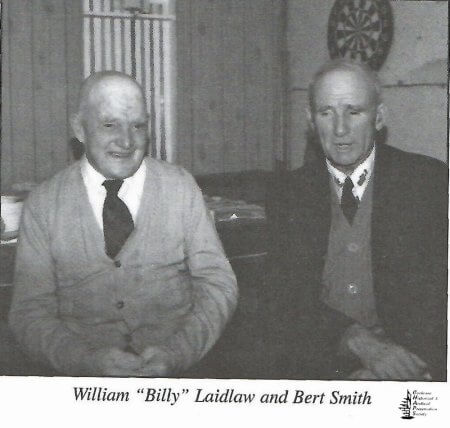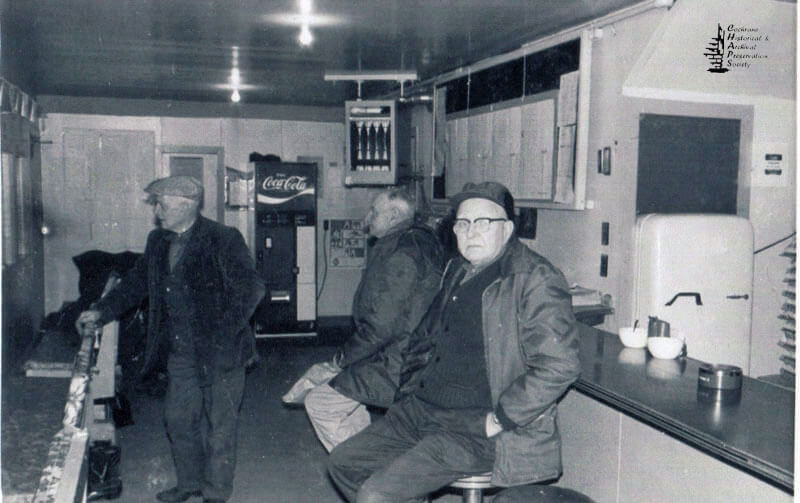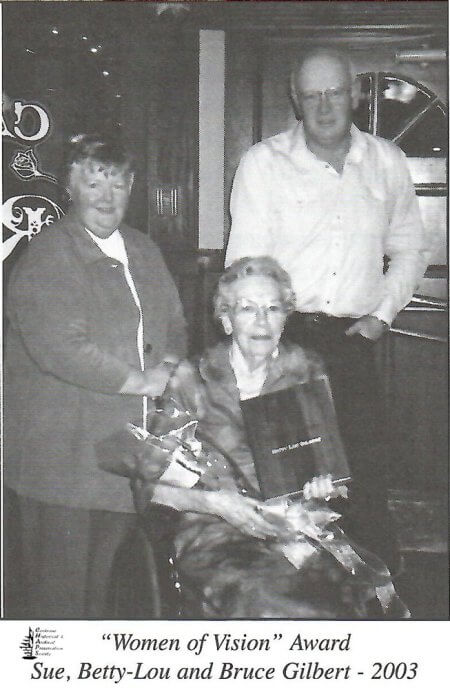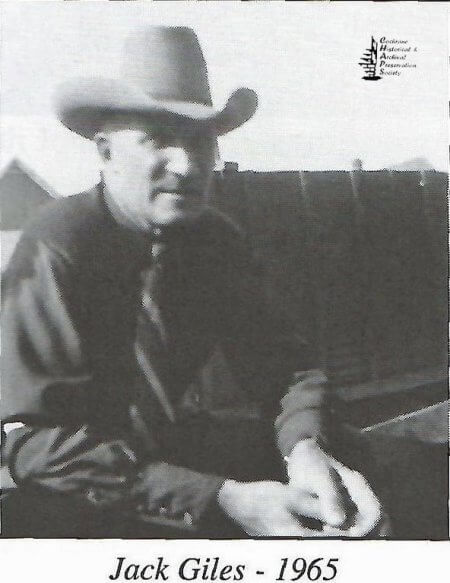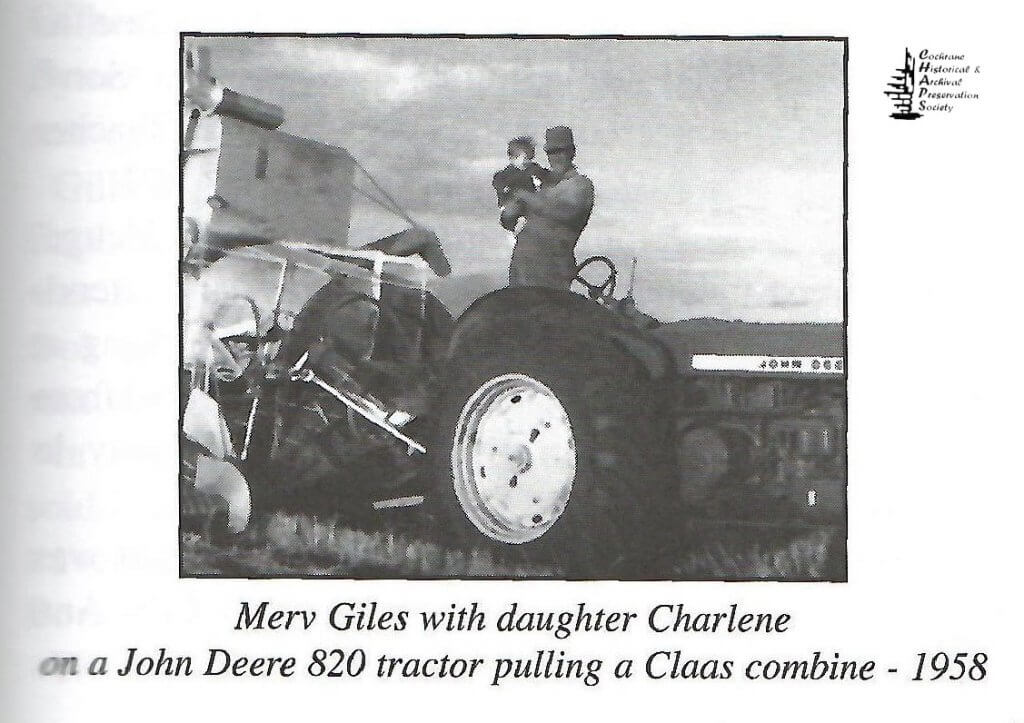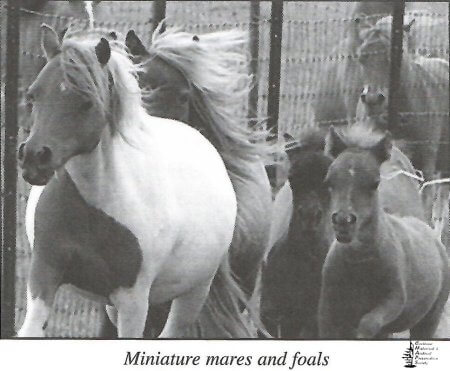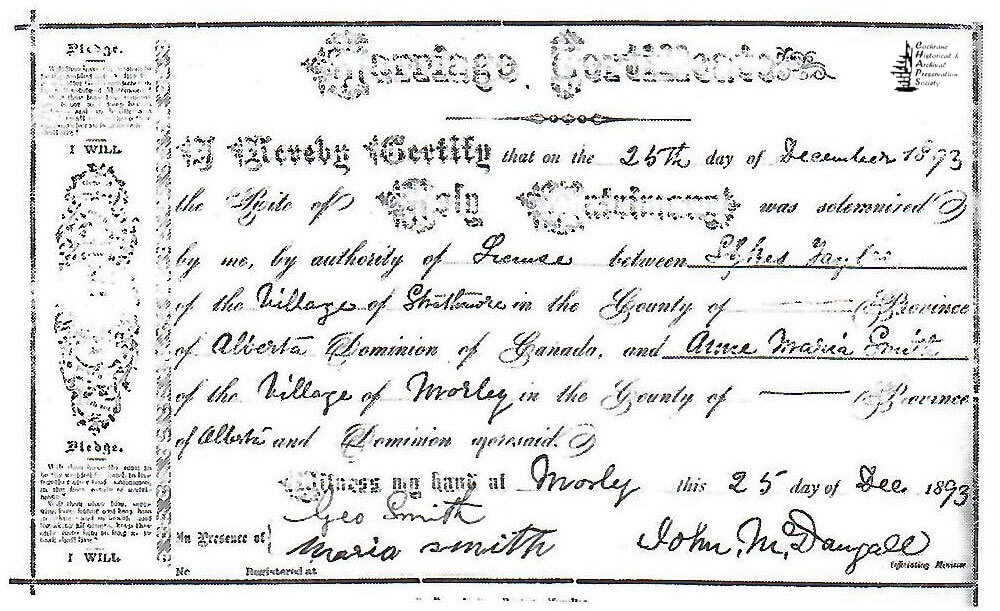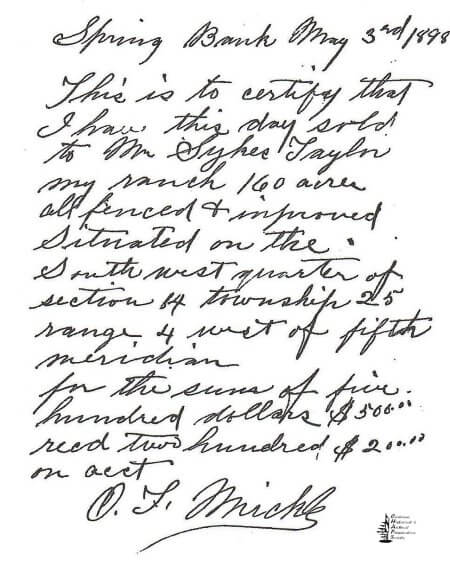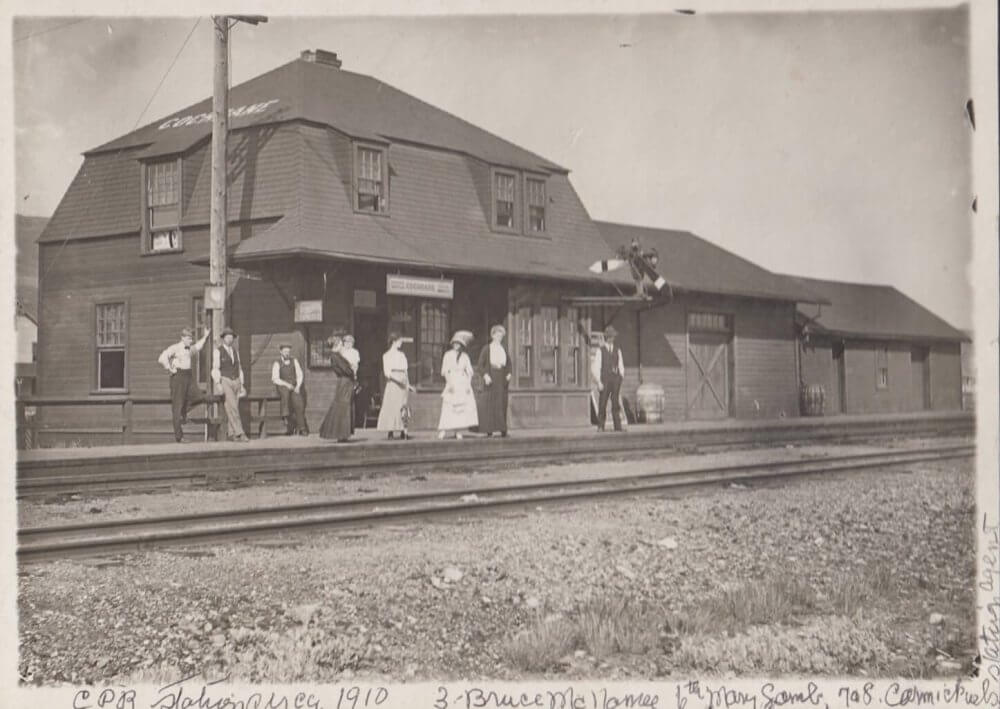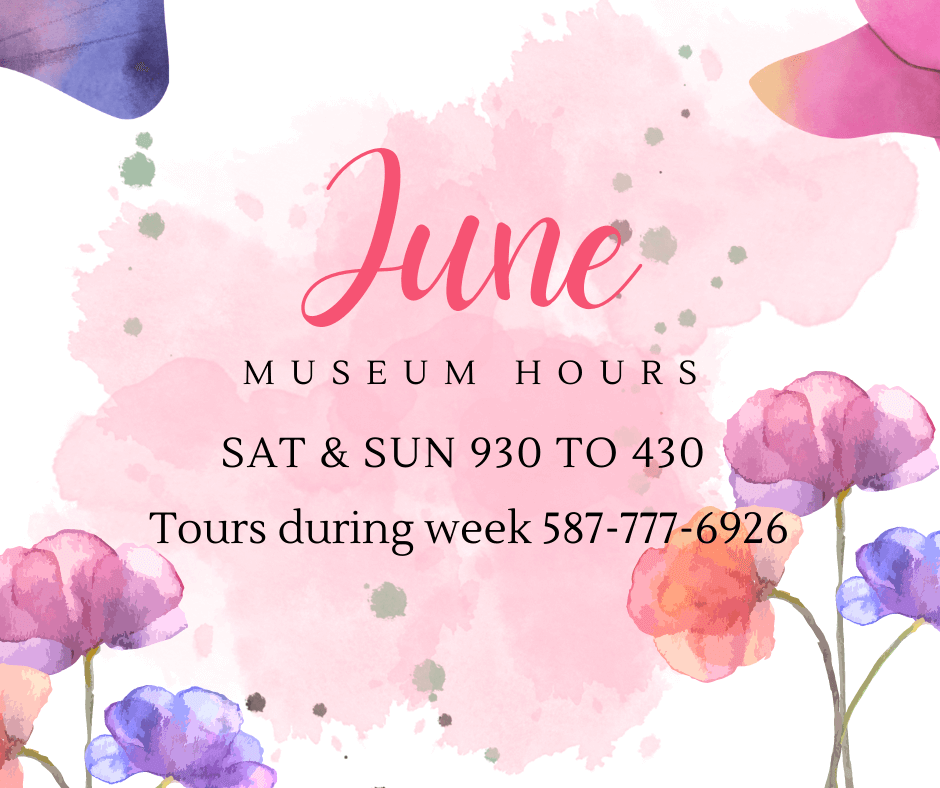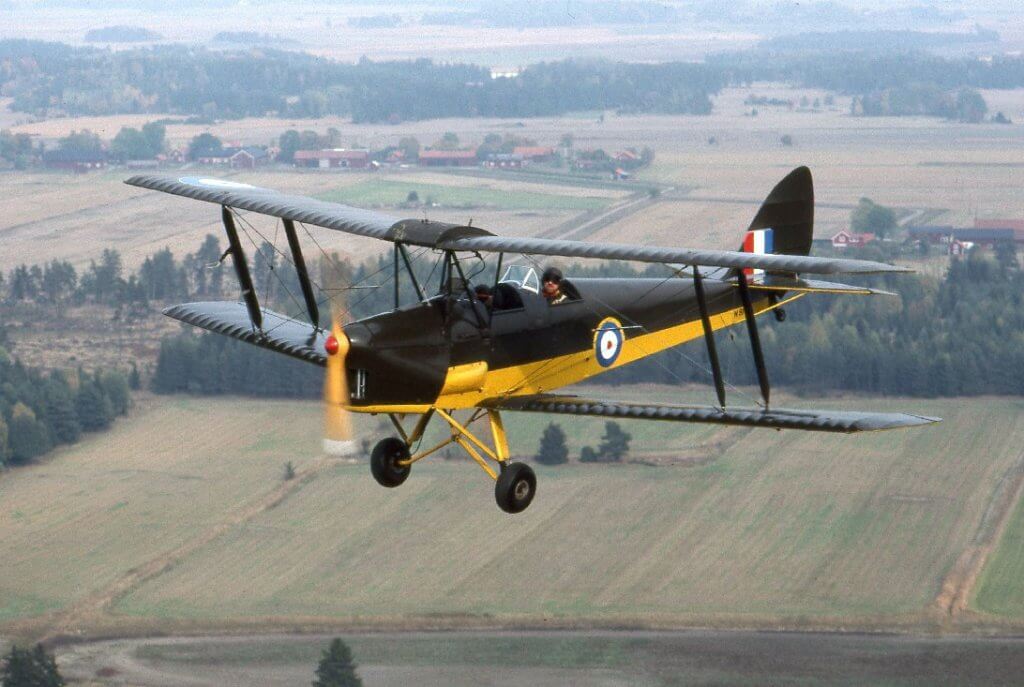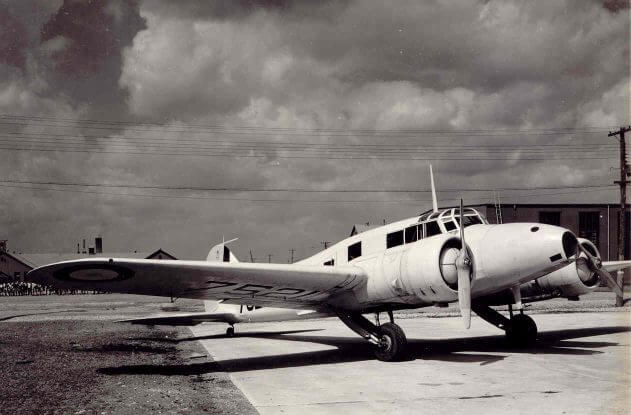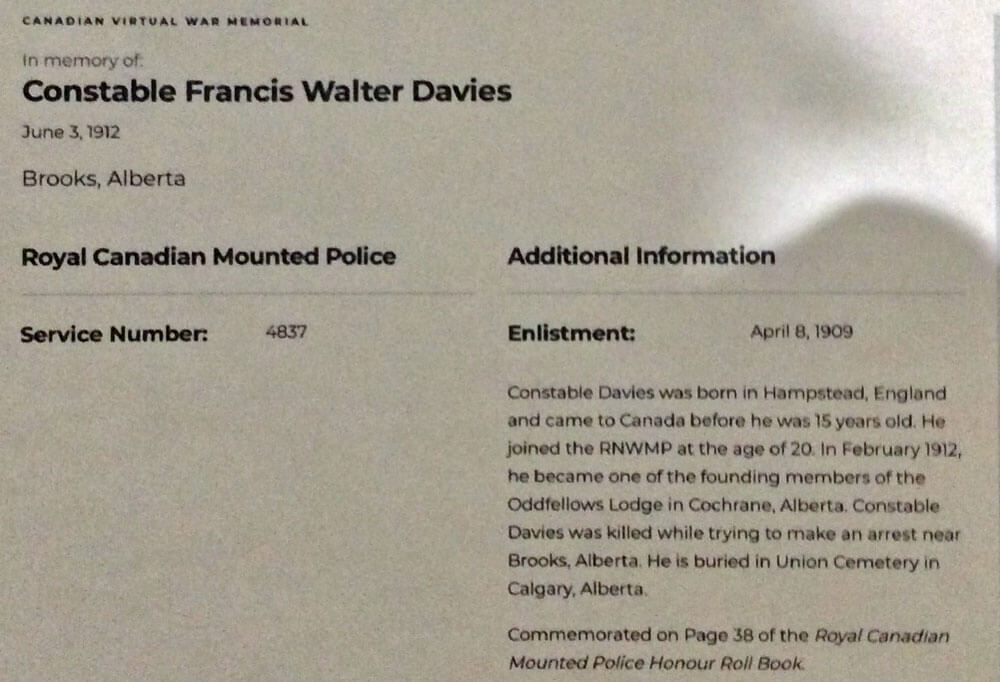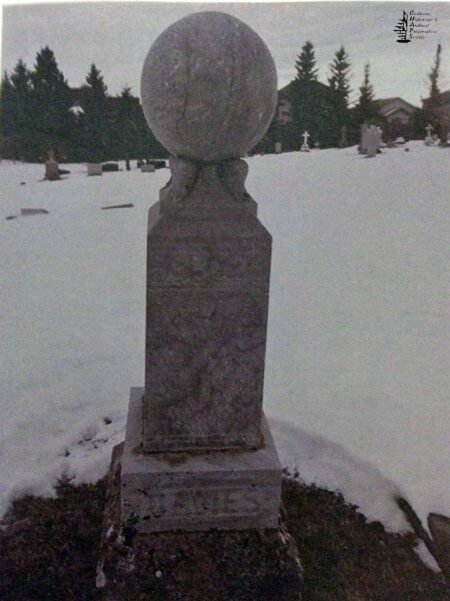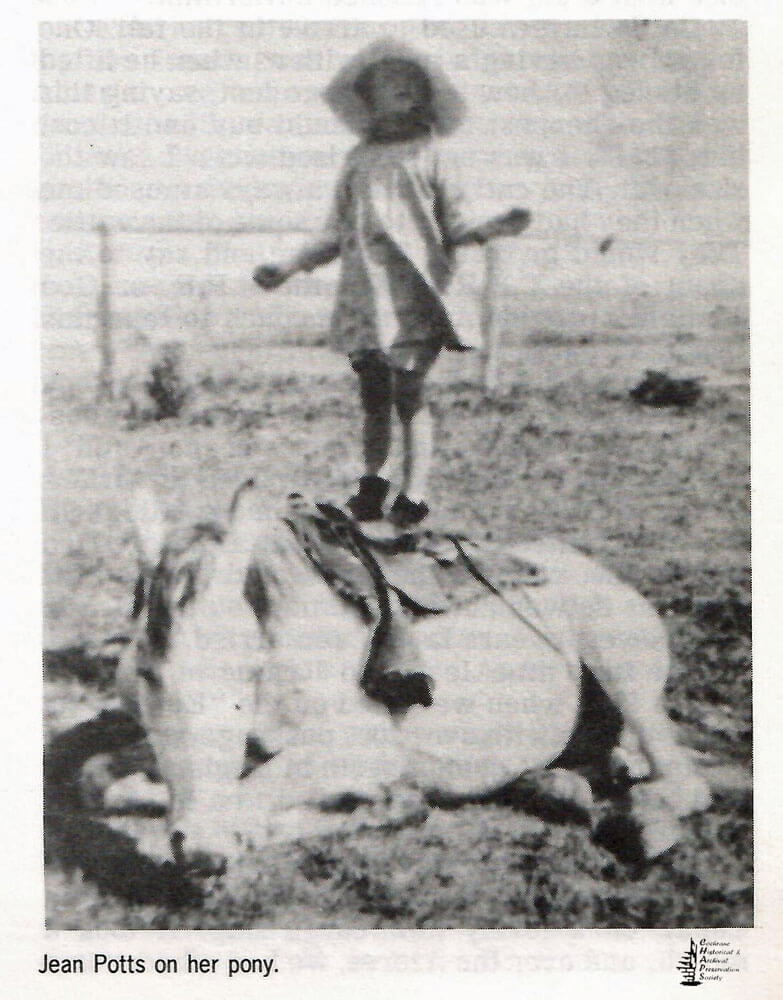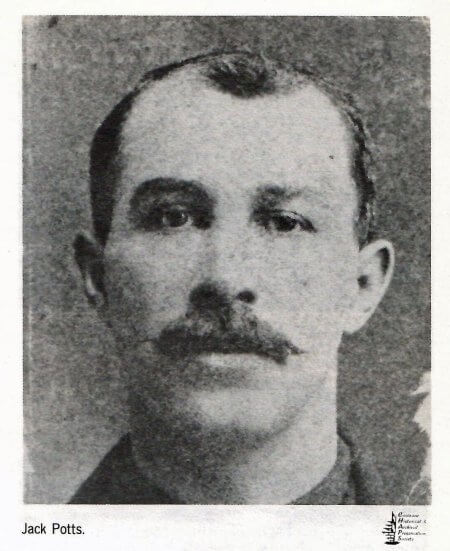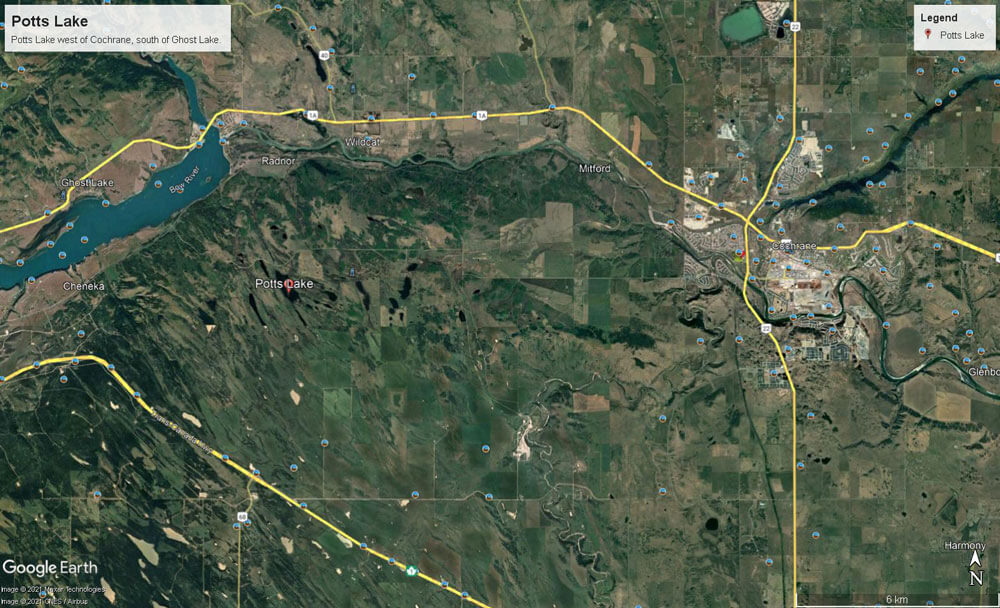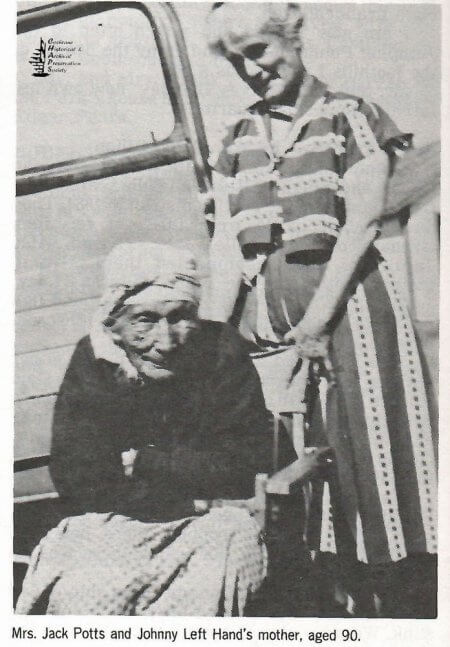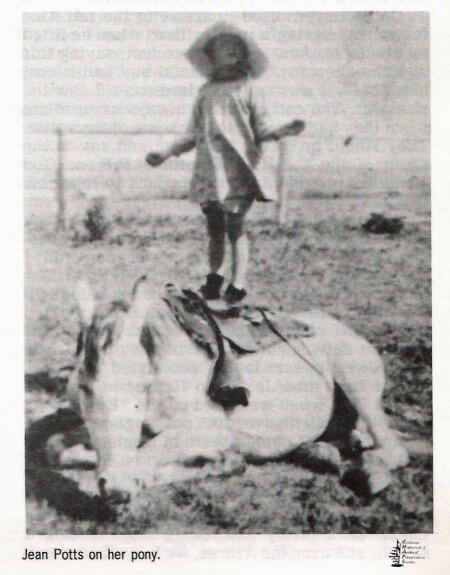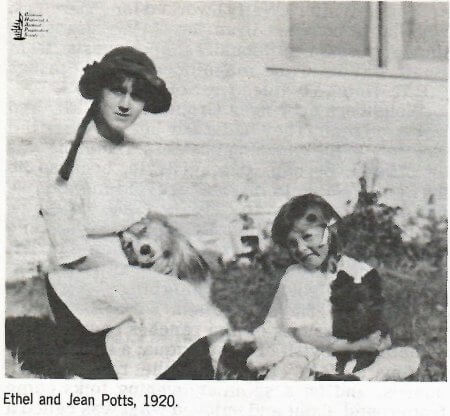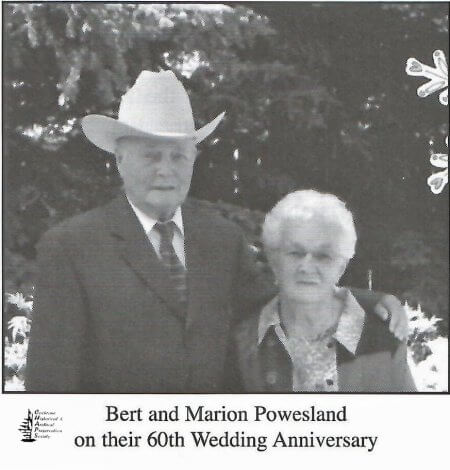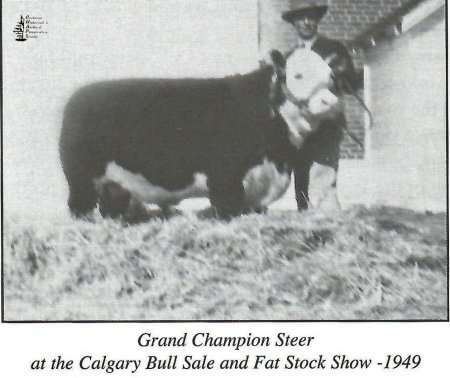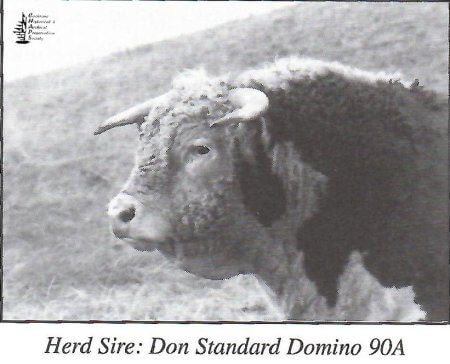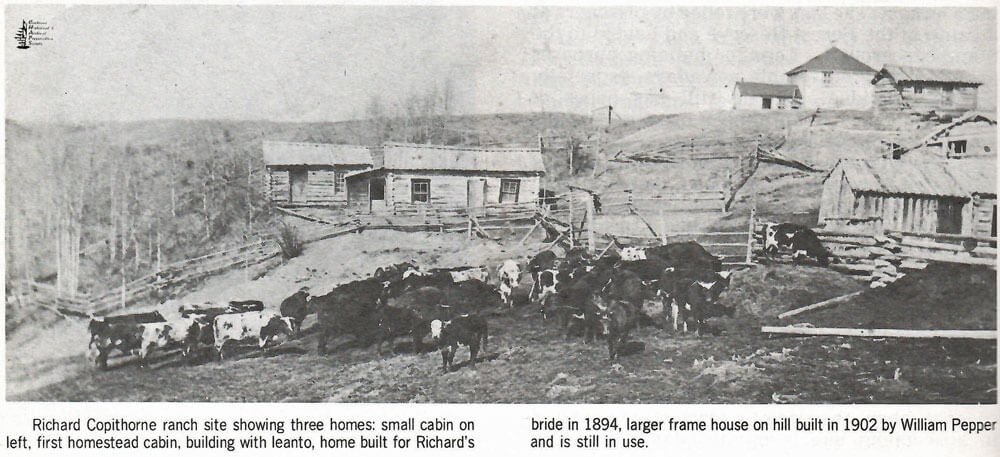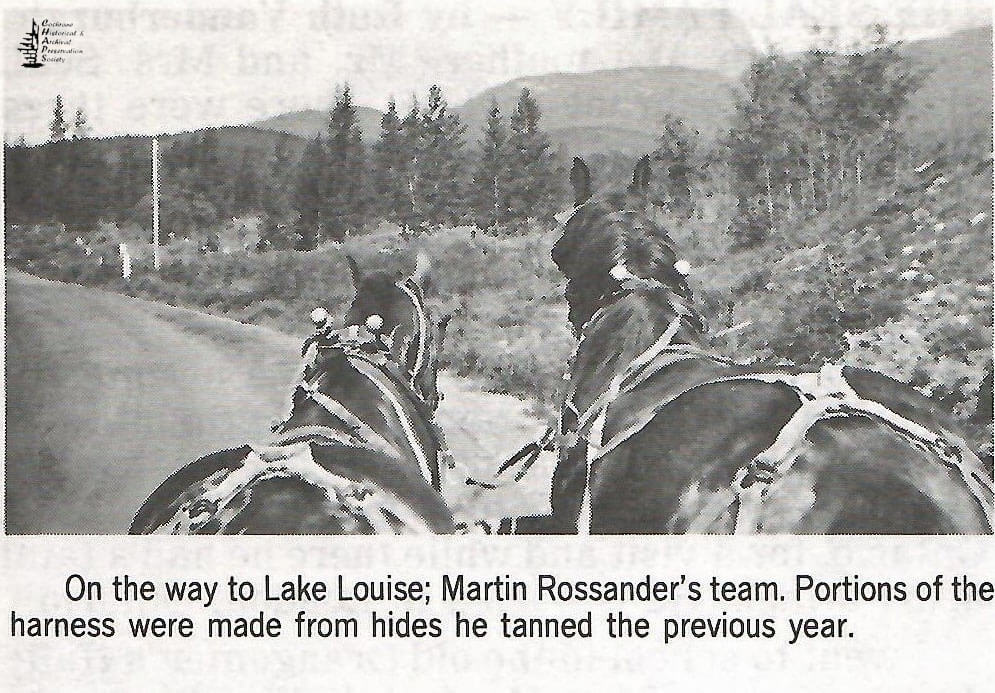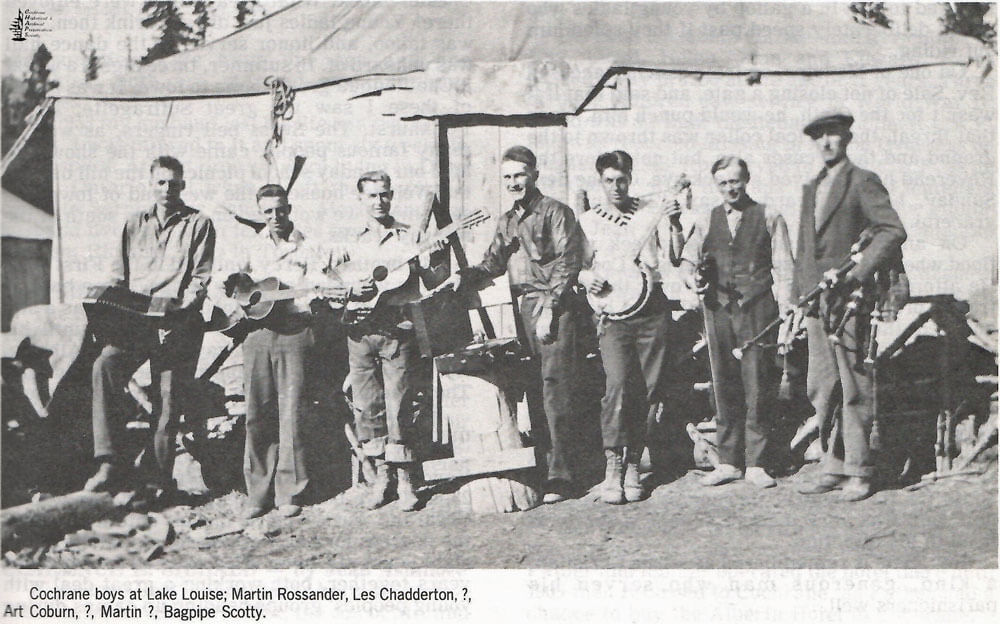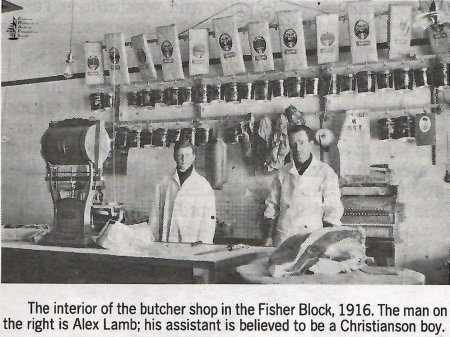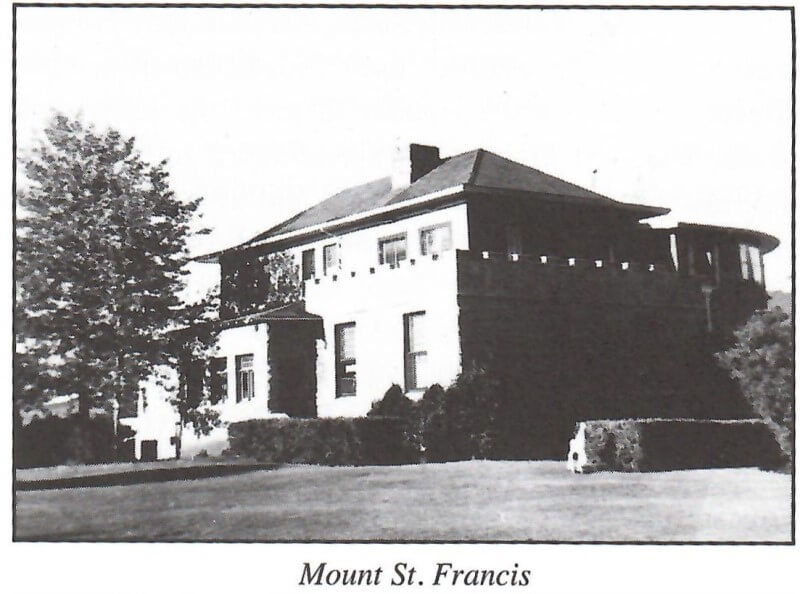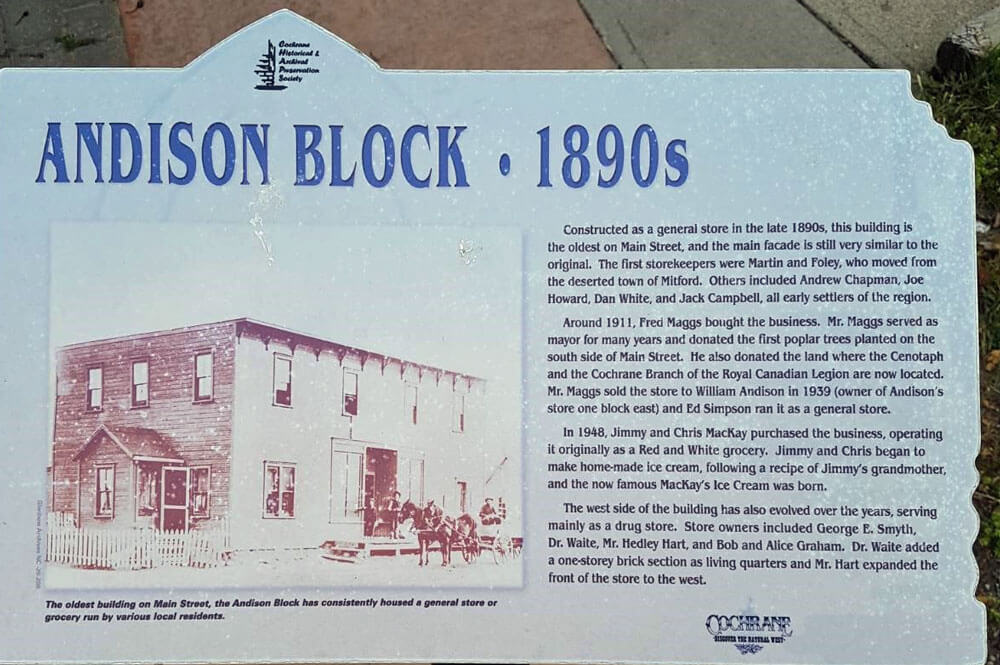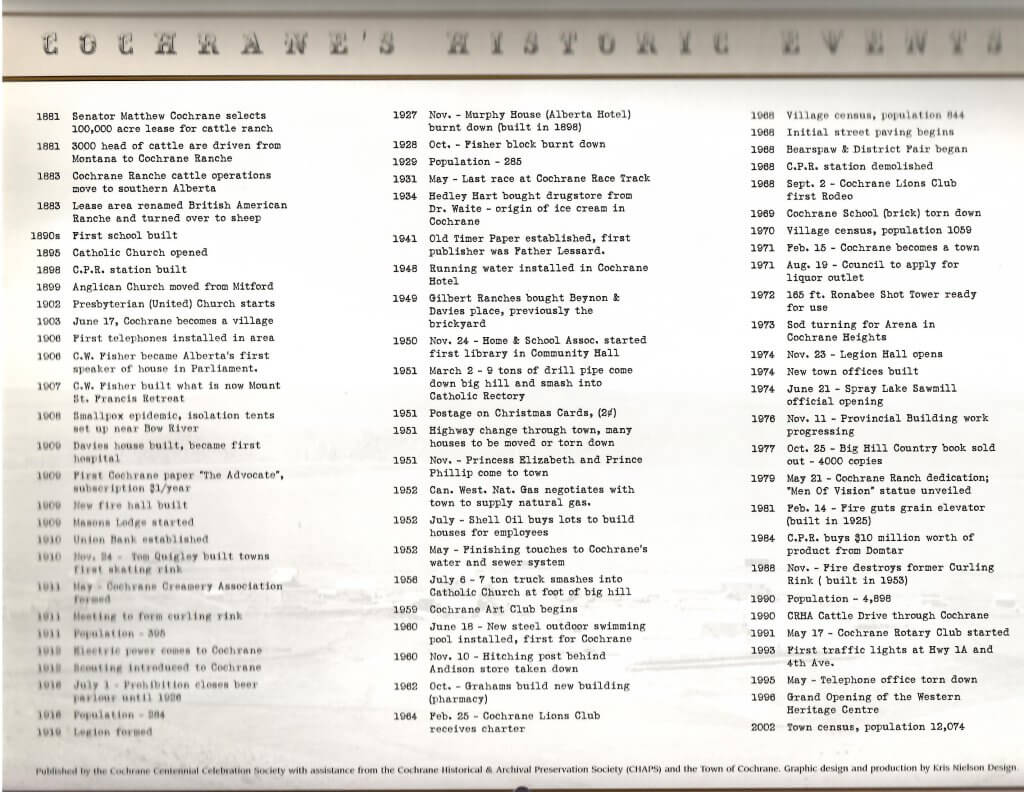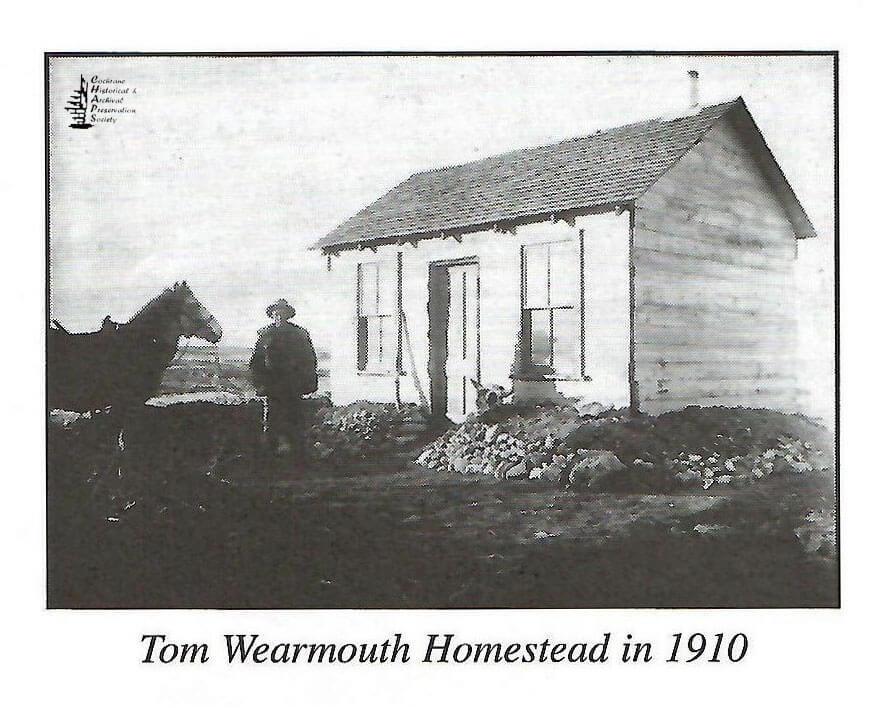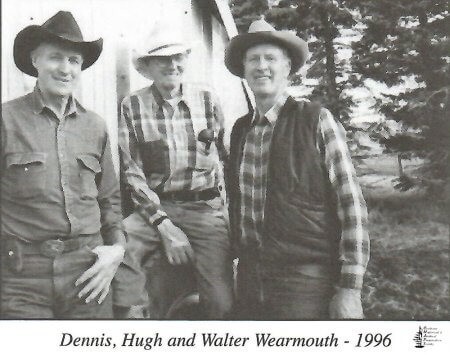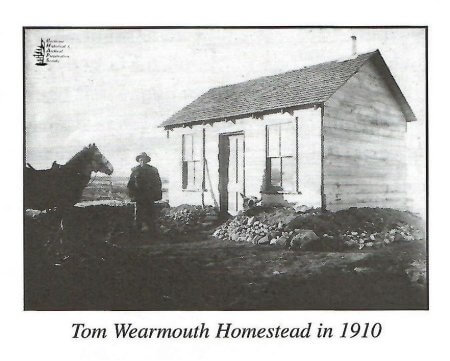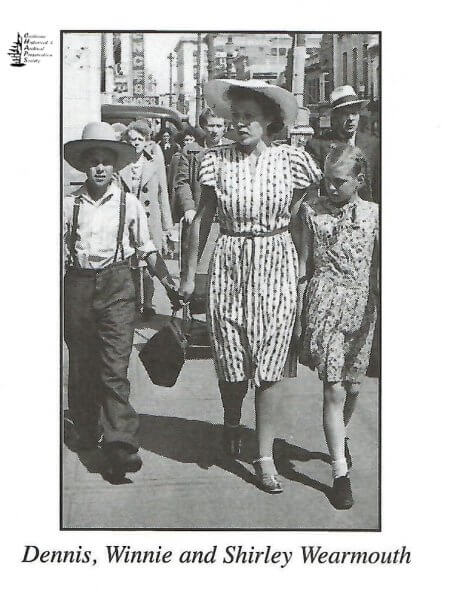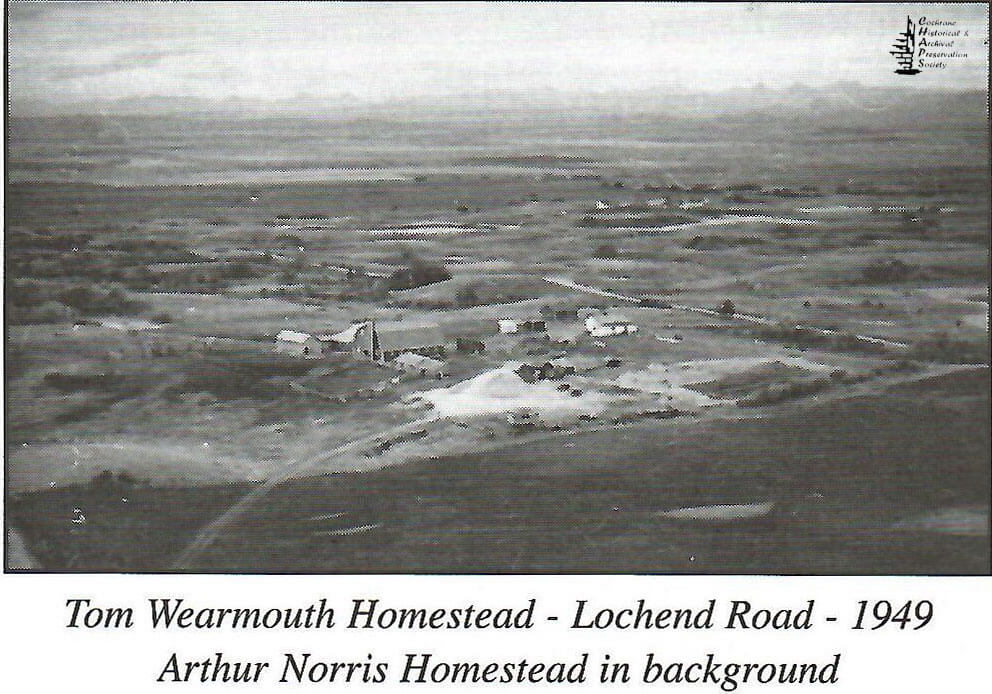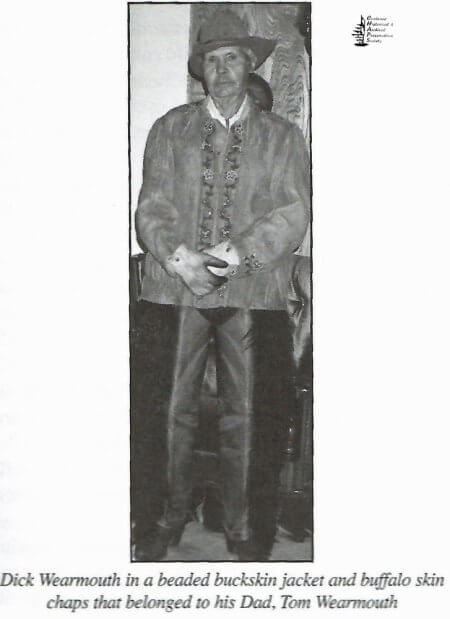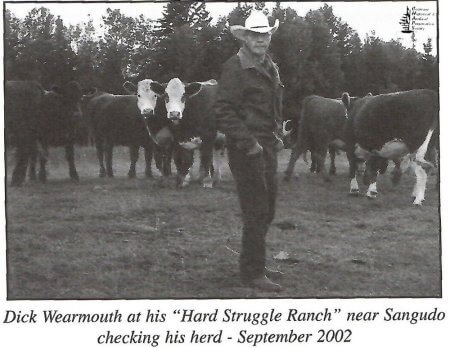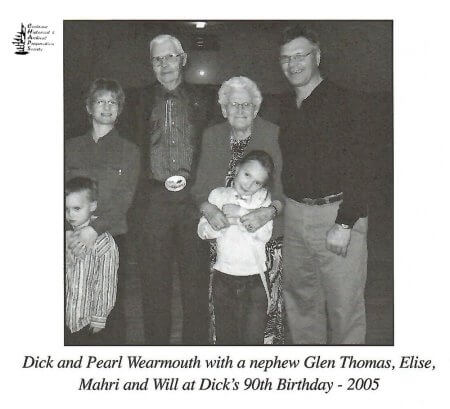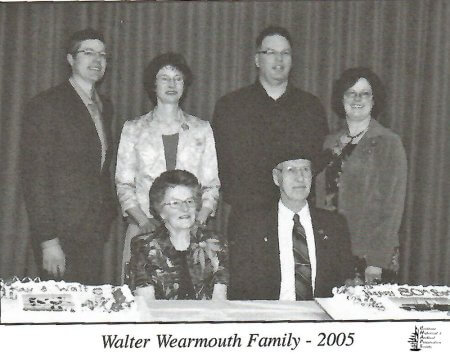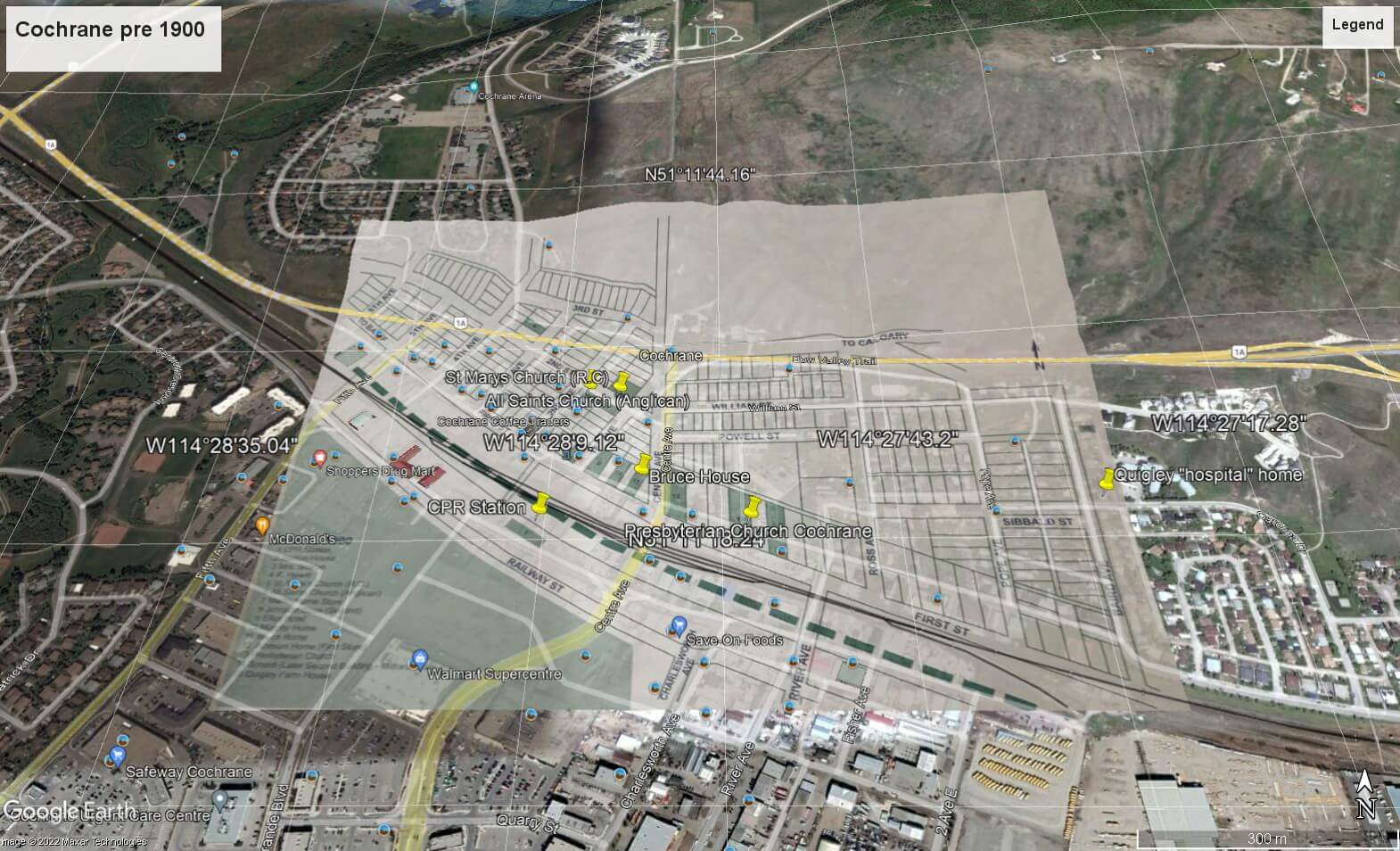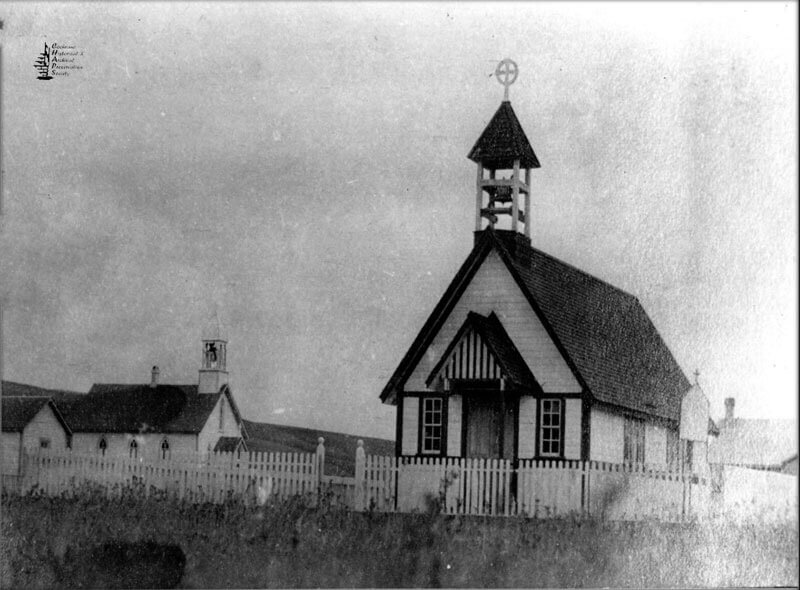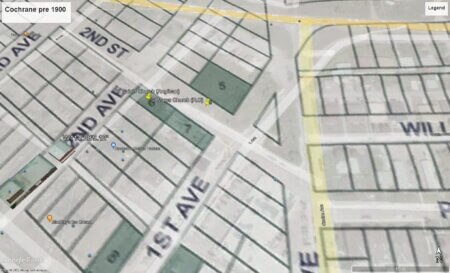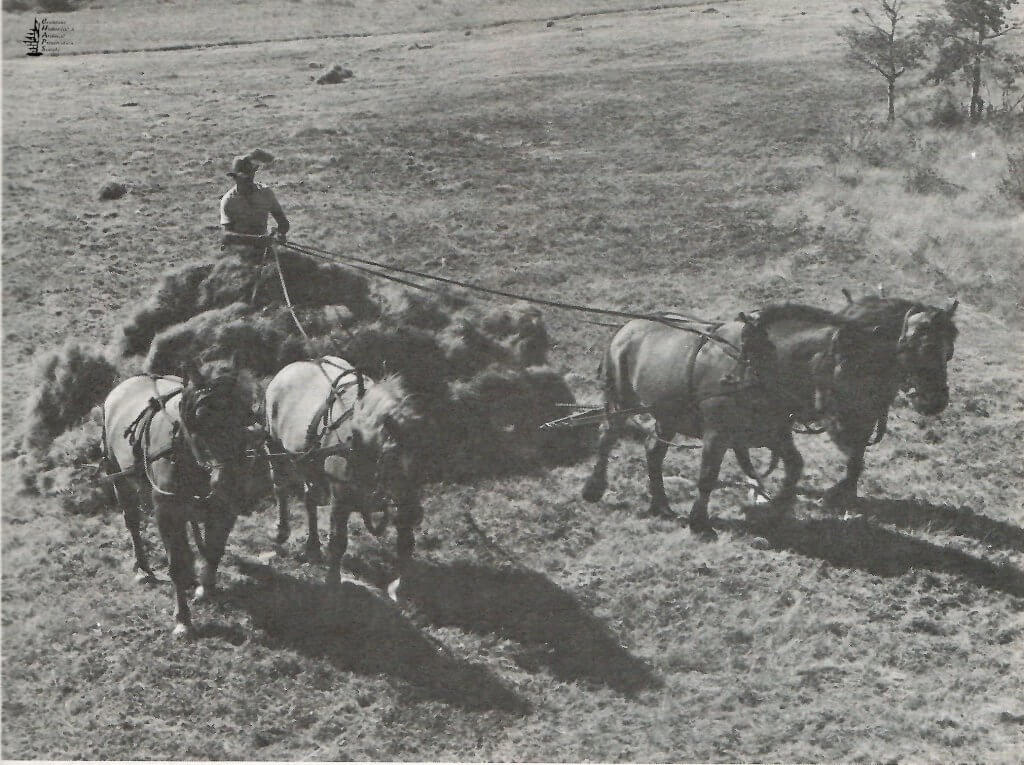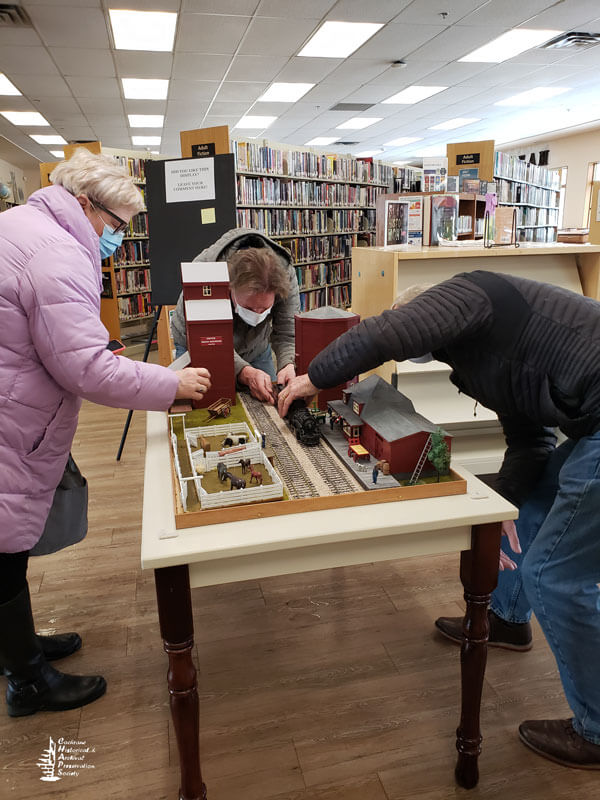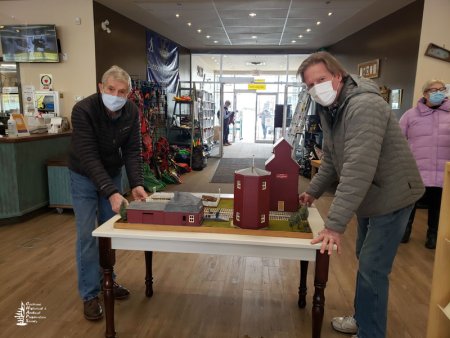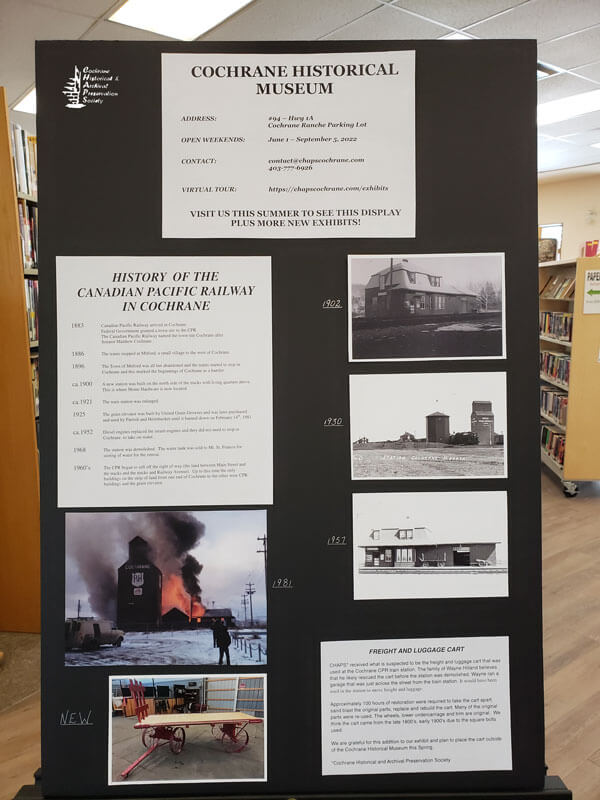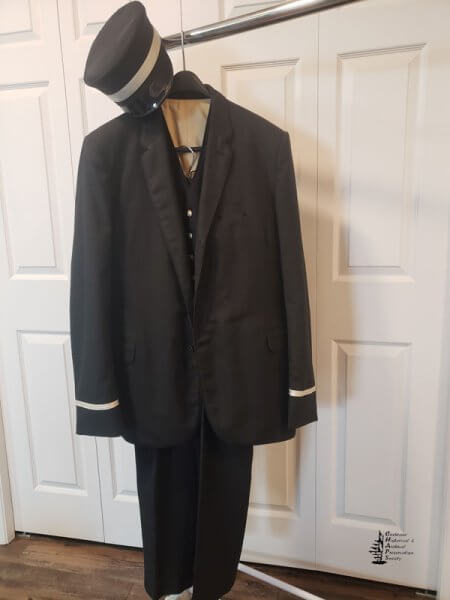- by Phyllis Nicoll and Gordon Hall pg 233 Big Hill Country 1977
Our parents, Sydney (Syd) Hall and Mary Ann Smith, were married in England on October 23, 1907. They came to Canada in May 1911, crossing the Atlantic on the Lusitania. The crossing took two weeks. They had at first considered going to Australia, where some of the other family members were going. However, Dad had been in the United States before they were married, as a groom for Vanderbilts, and they decided to try their luck in Canada.
They crossed Canada by train to Victoria, but that city did not appeal to them, so they returned to Calgary. They lived at first in what is now East Calgary, near where the stockyards are located. The police barracks were nearby, and when they arose one morning the scaffold could be seen, where a criminal had been hanged in the early morning hours. Later they moved to the Bankview district, to a stone house that is still standing.
After living in Calgary for a few years, during which time a son, Gordon, was born, they moved to a farm in Springbank. A daughter, Doris, arrived while they lived there, during a howling blizzard that started on May 3 and raged for three days. Cattle, caught in fence corners and coulees, died in great numbers.
In succeeding years the family moved to DeWinton and then to the Airdrie district. There, another daughter, Phyllis, was born. In April 1923, the family moved to the Cochrane district to a ranch owned by Margaret Robertson. It was located three miles west of Cochrane. The house was beside the dirt road from Calgary to Banff. A team was kept harnessed for travellers who got stuck in the mud holes, and a lighted lamp in a window of the house guided them as they came for help. We lived there one year and moved to Cochrane in the fall of 1924.
In 1924, Dad started showing horses in the Calgary Horse Show. He had raised and shown
horses in England for a number of years before coming to Canada. In the summer of 1925, he was a trainer for the Welsh Stables and trained Barra Lad who, in August of that year jumped to a World High Jump record of 8 feet 112 inches, a record that has never been broken.
In 1927, Dad operated a restaurant in Cochrane; it was situated in the old bakery, which stood on the site of the building that housed the Post Office until 1974. Sometime during the winter of 1926, there was a bad blizzard; the bigger boys at the school went to the three restaurants to get sandwiches and hot chocolate for the school children. That year, the Murphy House burned down, and the following year the Fisher Block also burned.
In 1928, the family left town and moved to the Cooper place, three miles north of town and east of the Dog Pound Road. This was at the start of the Depression, and work was hard to get. In the summer of 1928, Dad and Gordon worked at Pete Collins’ Brickyard, which was the last year that the brickyard operated. After that, they worked at any job they could get. The Cochrane Race Track was in operation then, and when the Race Horse Train arrived in Cochrane, Gordon would find some excuse to leave the room at school. He would show up at the train with his pony and lead racehorses a mile west to the barns. He was paid one dollar per head, so the old pony made as many trips as possible. Dad used to run the starting gates at the track.
Dad worked on the road, first under George Woodson as foreman, and then under Tom Baptie. In 1936 he was elected foreman for 7 Townships. He held this job for twenty years, retiring in 1956. The equipment was all horse-drawn – slips, Fresnos and graders. It wasn’t too easy to find someone capable of handling the number of horses necessary to operate the graders effectively. Dad usually had Slim Fenton, an excellent teamster, on the grader. One day Dad was brought home lying flat on his back. The men had removed a door off a house to lie him on to move him. While pulling on the rope as he loaded a Fresno, it broke. Dad cracked vertebrae as he fell. We survived the winter with a cash income of $9.00 per month from the Compensation Board.
Everyone in the family had to pitch in at whatever had to be done. Mother always had her flock of poultry and cultivated as large a garden as possible during those dry years. The girls had to do their share of “men’s” work. Every winter was spent fattening calves for the Spring Livestock Show and Sale. Doris won several awards for her top calves, including a silver cup for the Best Dressed Carcass donated by Burns and Company Limited. Phyllis was named top Junior Judge and won many honours in all classes of livestock judging throughout Alberta. The last year that we were eligible to show calves, the Junior Beef Club purchased calves at the stockyards at 6¢ a pound. After many months of
tender loving care, they were sold at auction; ours brought 5¢ a pound, and other calves were even lower in price.
Dad was noted for his veterinary skill and helped many farmers with sick horses and cattle. The only pay was a grateful thanks.
In the 1930s, we did not have any money, but we had fun. We always attended the Grand Valley and Weedon picnics. There was often a box social at Cochrane Lakes or Weedon School. Gordon and Doris, along with Earl Speers and Harry Webb, formed an orchestra, “The Night Owls.” When a collection was taken we would end up with perhaps fifty cents apiece, but we played for fun, not money.
In the intervening years, we lived on two other farms in the Cochrane area. In 1940 we moved back to the Jack Beynon place on the outskirts of the town. In 1950, Dad purchased ten acres of land on the west end of town and resided there until his death in 1969. Mother predeceased him in 1968.
Phyllis married Louis Nicoll, of Jumping Pound, a member of a pioneer family in that area. Doris married Cecil Colwell, who at the time was employed by the C.P.R. Gordon married Belle Tindal, a member of another local family.
Gordon and Belle made their home in Cochrane, after working for Harry McConachie of the Justhome Ranch for three years. They purchased a lot in the east end of Cochrane in 1946 and built their own home. Gordon worked for Graeme Broatch at the Cochrane Auto Service from 1947 until 1960. At that time he was appointed Postmaster for Cochrane and the area.
For thirty-five years, Gordon served as a member of the Cochrane Volunteer Fire Department, from 1941 until 1975. He was Fire Chief from 1954 until 1960. He was Cubmaster, Group Commission Member and Assistant Commissioner for eighteen years, with the Boy Scouts of Cochrane. A Big Game hunter, he has many trophies to his credit.
Belle is active in the Rebekah Lodge, and is an expert knitter, making many sweaters for family and friends.
Gordon and Belle have four sons, Ronald G., Frank Edward (Eddie), Allan William, and Kenneth Sydney. The boys were all members of the Boy Scouts; Ron, Eddie and Allan won an Award of Merit for their action and quick thinking in a truck-train accident. They have all belonged to the Cochrane Fire Department. Allan was Fire Chief from 1970 until 1975.
Ron is married to Faye Mickle, daughter of Mr. and Mrs. Bert Mickle of Millarville. They have two children, Debby and Marty. Ron completed a course in tinsmithing, passing with honours. He worked for about two years at this trade, then bought Timberline Tours Ltd. of Lake Louise, Alberta, which is a Trail Riding business, serving tourists from all parts of the world. Ron and Faye also have a farm at Sundre.
Eddie joined the Royal Canadian Navy after completing High School. He was based on the Aircraft Carrier Bonaventure and went on manoeuvres to many parts of the world. After three years in the Navy, Eddie married Geraldine Bickerton, daughter of Mr. and Mrs. Art Bickerton of Ralston, Alberta. They have two children, Kevin and Kathryn. Ed became interested in flying and joined Alpine Helicopters as an apprentice Engineer. He was based in Kelowna, British Columbia and Hinton, Alberta. He is now employed by Klondike Helicopters of Calgary and is a Pilot Engineer. For the last two years, he has been flying at Resolute Bay, Banks Island and Ellesmere Island.
Allan is married to Carol Hamilton, daughter of Nic and Margaret Hamilton of Bearspaw. They have three children, Jody, Timmy and An drew. Their oldest son, Trevor, passed away as an infant. Allan has done well in Cochrane, starting his own oil and gas business as an agent for Pacific 66. He also has a liquid feed business in conjunction with the bulk oil station.
Ken worked as a guide at Timberline Tours, at Lake Louise, then for the Parks Department as trail crew, and later as a heavy equipment operator on road construction. He is married to Virginia Friedricks, daughter of Mr. and Mrs. Joe Friedricks of Olds, Alberta. At present they reside at Airdrie, where Ken works for Canadiana Farms.





